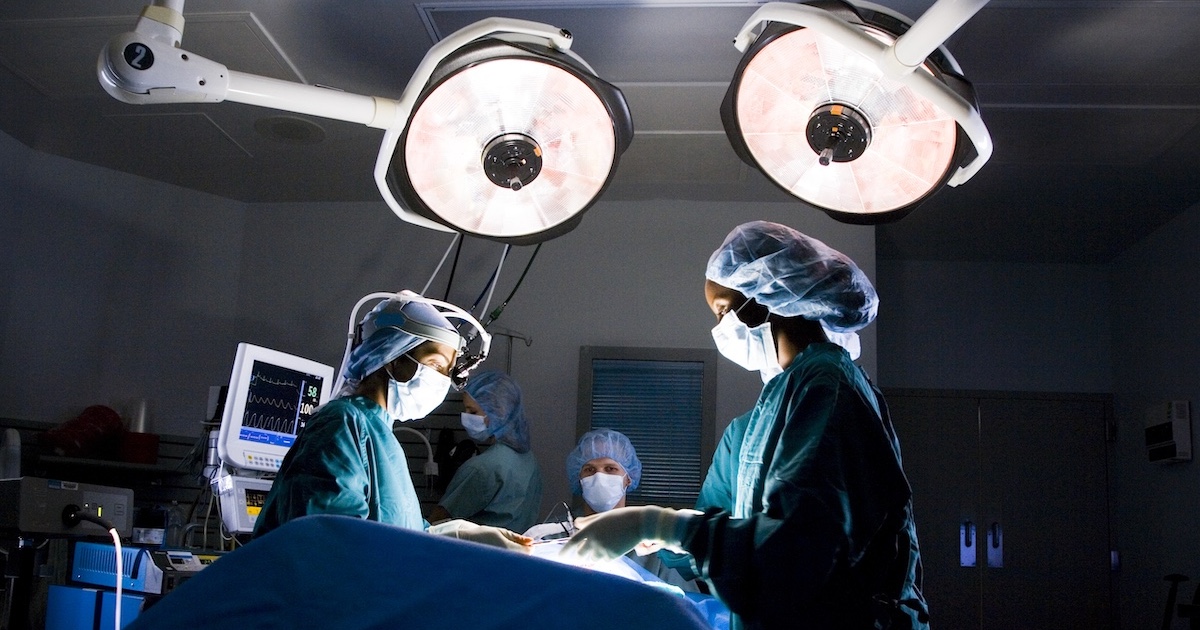
Moon Surgical's Maestro system provides surgeons with robotic "extra hands" during soft tissue procedures, aiming to enhance efficiency and autonomy while enabling surgical staff to focus on higher-level tasks.
CEO Anne Osdoit spoke with MobiHealthNews about the company's robotic surgery technology and how it is designed to help the entire surgical team without disrupting existing workflows.
MobiHealthNews: What is Moon Surgical's offering?
Anne Osdoit: Moon is a French-American company that is focused on developing a new way to assist surgeons, a new way to really make them more in control during surgery procedures, and ultimately, make them more confident and more efficient when they do these interventions.
So, essentially, they can do more with less in a more autonomous way, in a setting where staff might be short or focused on other things and in a way that really preserves, if not increases, patient safety.
That's the general principle. We do not want to completely revolutionize or reinvent the way surgery is done, but we really want to enhance and augment how it is done today.
MHN: How does the robot actually work?
Osdoit: The robot has two arms, and essentially, it equips the surgeon with an extra pair of arms holding two additional instruments. Those instruments would typically be held by a surgical assistant, but the surgical assistant, they need to do that and then prepare what is coming up next in the procedure and then they need to support the surgeon in doing other things, as well. So, if they have both of their hands busy holding a camera and a grasper and pushing tissue aside, it means that they can only do their tasks sequentially. So, you end up having a procedure that is very choppy, that is sort of interrupted while you're waiting for one another and communicating and coordinating, et cetera.
So, what we are doing is we are giving the surgeon control over their vision, so the camera, and then their access to tissue. So, they are able to maneuver that themselves, which just makes them more efficient.
The analogy I'll give you is – it is a very simple one, but it is pretty efficient – when you learn to drive a car, you have your steering wheel; you have your brake; your gearbox, if you have that; and an accelerator, right? So, you have four different functions.
But when you learn to drive, your instructor is taking over some of these, and you are only doing things like the steering wheel and the brake or whatever, but it requires a lot of communication and coordination and you are sort of clunky when you go from point A to point B because you are basically transitioning and adjusting constantly.
But then, once you know how to drive the car and you are doing all these different functions yourself, all of these transitions are seamless. I mean, you do not think about them anymore. And basically, you are a lot faster to go from point A to point B. You're also a lot more consistent in the way you do it. And so, it is exactly the same analogy.
Minimally invasive surgery is a procedure, an approach where the roles are distributed between different people, and it creates all these transitions and sequences during the procedure. And so, if you sort of unify that and give it to the surgeon while the people assisting him are focusing on their tasks, you are just streamlining the whole thing.
MHN: What kind of surgery can Maestro be used for?
Osdoit: It is used in soft tissue surgery. So, anything abdominal, thoracic, urology and gynecologic.
MHN: So, this is not a replacement for surgical assistants?
Osdoit: No. What they will do is they will typically focus on their tasks rather than just maneuvering those things for the surgeon, which will keep the operating room on schedule.
Another thing they can do is – there are a lot of providers that are short on staff – they might split a staff between two rooms, like you have for anesthesiology. For instance, you often have an anesthesiologist split between two rooms. So, the general concept is driving efficiencies and allowing more flexibility in the way you deploy the staff that you have, but certainly, you are not removing them.


